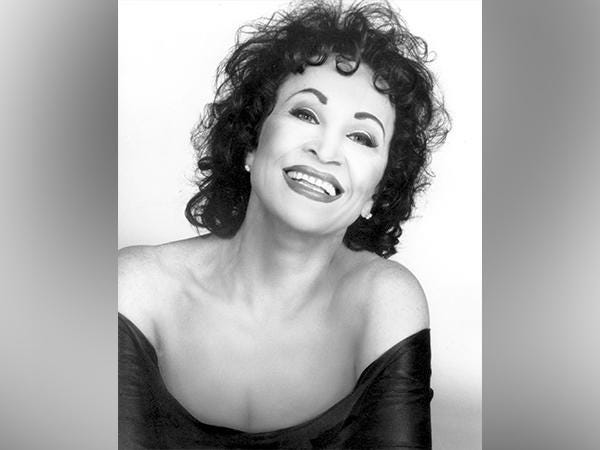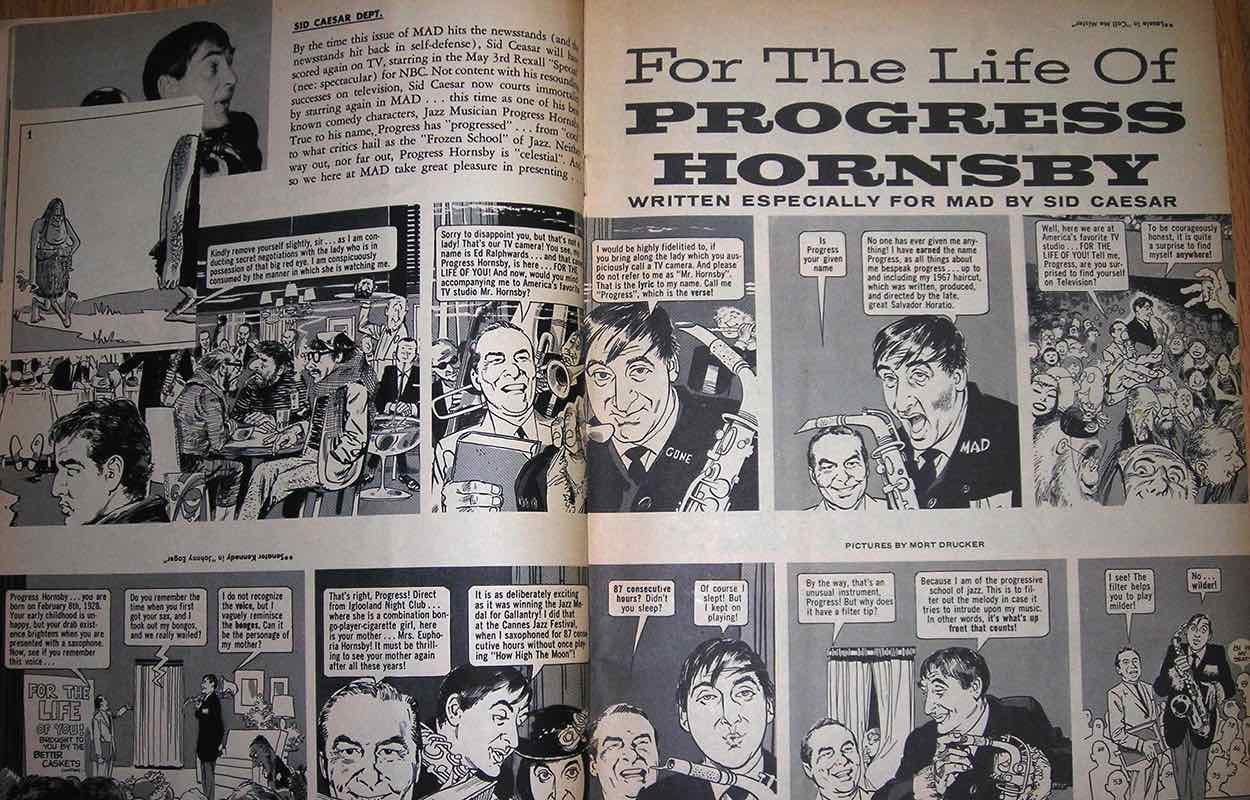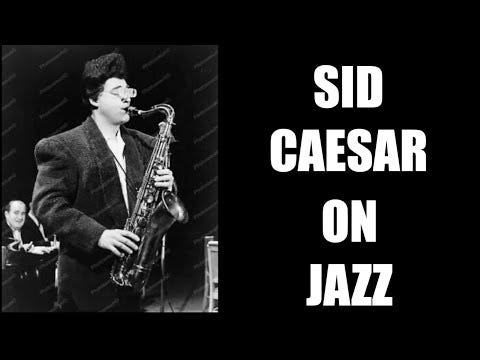I won’t do a full obituary of the great Chita Rivera, but I am doing a Clip Joint tonight (Wednesday, January 31st) in her honor, and I wanted to share a few of my favorite clips of her right here as well.
As everyone agrees, Chita was the most approachable musical theater uber-Diva that ever there was; it seemed like she was the only one who didn’t realize that she was a living legend. She was one of the greatest dancers in the history of Broadway, and even into her ‘80s, when she couldn’t move as much, was still an incredibly engaging entertainer.
This is probably my single favorite clip of Chita, from the anthology / variety series, The Revlon Revue, May 5, 1960, an episode headlined by Sid Caesar, with his regular sidekick, Howard Morris, and special guests Chita with the celebrated choreographer-dancer Jack Cole. This week’s entry was titled Tiptoe Thru TV, and the general idea was to parody contemporary television programming, something that Sid Caesar did better than anybody. As Rob Waldman points out, at this moment in May 1960, she had already done her career-making turn as “Anita” in West Side Story and was currently appearing as the lead, “Rosie,” in Bye Bye Birdie. She had already piled on an impressive resume of legendary choreographers: Jerome Robbins, Gower Champion, and, here, Jack Cole.
This number works so well not least because it starts out as a kind of a parody: this was a moment when Leonard Bernstein was frequently on TV, for younger and older viewers, explaining not only symphonic music but occasionally also musical comedy and jazz. Caesar makes his entrance in a very formal tailcoat like Bernstein, but his speech is strictly out of “Progress Hornsby,” the beatnik saxophonist who was one of Caesar’s regular characters.
The explanatory speech is funny - not least because Caesar does such a great approximation of a stoner who keeps inadvertently repeating himself - and incredibly hip, a truly on-the-nose spoof on beat poetry, and those recordings of same such as Jack Kerouac was making, a tradition that Kurt Elling and a few others keep going today. (In fact, I would love to hear Kurtskis recite this sometime.)
Good Evening, ladies and gentlemen. What is jazz?
Jazz is the feeling,
an emotional upheaval
of the cataclysmic creation,
of the inner dynamic,
of reverberating vibrations.Good Evening, ladies and gentlemen. What is jazz?
Jazz is the sound of the wind in a storm.
Jazz is a wild wave banging against the shore.
Jazz is a mountain.
Jazz is a swinging desert.
Jazz is a purple bird, flying against the amorphous. (?)Good Evening, ladies and gentlemen. What is jazz?
Jazz is a pencil sharpener.
Jazz is a frying pan.
Jazz is a handball court.
Jazz is a beautiful woman whose older brother is a policeman.What is jazz? I don't know.
I’m leaving the answer to that to Mr. Jack Cole and Miss Chita Rivera, who will explain all about jazz.
There follows an astonishingly wonderful dance number by Chita and Cole, with a full dancing chorus, of W. C. Handy’s classic song of 1917, “Beale Street Blues,” a jazz standard from the very beginning of the music. This is also one of her best vocal performances on TV at least, she never seems remotely out of breath - which leads me to wonder if the singing might have been pre-recorded. Her dancing is the thing, as you’d expect. Her body seems to be made out of rubber, as if she were infinitely flexible, and yet she’s perfectly straight, forming all the proper angles, and she perfectly captures the rhythm, never missing a beat. It’s an exemplary performance.
PS: from Producer / director / Screenwriter Rob Waldman: FYI…when I met with Sid in preparation for his A&E Biography, he went looking for a tape he wanted to show us. He found it, put it in the cassette player, proclaiming “This is my favorite production number.” It was “What is Jazz” and the “Beale Street Blues.”
This clip is legendary and wonderful for a different reason - the 1964 musical Bajour is truly one of the major cult flop shows of all time. (Songwriter Walter Marks would go on to a more successful production with Golden Rainbow four years later.) Broadway buffs like myself were fairly hysterical when the album was actually issued on CD. (There even was a Musicals in Mufti production at the York in 2007.). Unbelievably, this was Chita’s only major appearance on Broadway in between Bye Bye Birdie (1960) and Chicago (1975)
This next is another fun clip, sent to me by the esteemed jazz-and-theater archivist Dr. Burton Kittay. It appears to be a privately (but officially and professionally filmed) evening at the old Westbury Music Hall, circa 1990. The first half is a one-woman show by Carol Channing, the second half is Chita in her solo show, with four chorus boys. It’s kind of choppy in spots, and several numbers are incomplete, but it’s truly great footage of Chita, as Louis Armstrong would say, at the height of her height. For a finale, the two grand dames come out together and duet on “Bosom Buddies” from Mame. I can’t find this anywhere on the youTubes, but I will share the number here:
Just doing a quick look through my back files, I find that I have had the opportunity to write about her at least twice, in 2018 and then again a year later, on the occasion of two of one-woman shows at 54 Below:
March 2018:
Performers in the musical theater sphere are often measured according to their “threat count,” ie, somehow who can sing, dance, and act is typically described as a “triple threat.” Such delineation of different talents is irrelevant when we consider Chita Rivera, who not only does all three, plus comedy and extremely advanced storytelling, but does all these things in a seamless package of a performance that blends them all together. She is a blur of constant motion, every number, from a complex narrative musical monolog like “Chief Cook and Bottle Washer” (from The Rink) to a dance number as deliberately simple as the bossa nova “Sweet Happy Life” is not only sung but danced, and not only sung and danced, but acted. In the hands, or rather, feet, of a lesser artist, all that dancing and moving around might distract from the lyric, but Ms. Rivera learned long ago (not least from ace choreographer and directors like Jerome Robbins and Gower Champion) how to put over a song with her whole body, with her torso and her tootsies as much as her chops. Much as she would hate to admit it, at 85, Chita Rivera is a living legend, one whom Broadway buffs revere from her iconic performances in Mr. Wonderful, West Side Story, Bye Bye Birdie, Sweet Charity, Chicago, Kiss of the Spider Woman, and many others, but like her contemporaries, the late Elaine Stritch and Barbara Cook, she also mastered the art of the solo supper club show. In performance pieces like Jacques Brel’s tour-de-force of a killer waltz, “Carousel” (not to be confused with Rodgers & Hammerstein), she transcends the whole genre of what is still often called “cabaret” to create a highly-intimate, very personal kind of one woman theatrical experience.
October 2019:
At 86, Chita Rivera may still be the world’s greatest embodiment of what we still sometimes describe as a “triple threat” performer, as an actor, singer, and, especially, a dancer. But breaking down the individual talents that she brings to a performance is a pedant’s game at best; the most important thing is that she’s a storyteller who puts all these abilities to use in her central quest to convey a narrative. Both the quality and the quantity of dancing that she does in her (mostly) one-woman show at Feinstein’s would be impressive at any age; in fact, she uses terpsichore the same way that most supper-club artists use singing and patter, as key components in her storytelling. An epic performance like Jacques Brel’s “Carousel” is, in fact, a kind of vocalized choreography - in your mind’s eye, she’s not moving all over the stage, but she’s flying to giddy heights, descending then rising up again - even though your actual eyes are telling you that she’s remaining in one place. This is her basic show, that I’ve seen many times before (and hope to continue to do so many times in the future) in which she narrates the highlights of her career on Broadway (with inside dope on West Side Story, Bye Bye Birdie, Sweet Charity, The Rink, Chicago, Kiss of the Spider Woman, etc.) but always with variations - this time, the new element is the inclusion of her daughter, Lisa Mordente (the only child born of a Shark-Jet marriage, she tells us) who serves as a stand-in for the late Gwen Verdon most memorably on the two classic Chicago duets, “Nowadays” and “Class.” Of the latter, she’s got no shortage.
Wednesday, January 31
7:00PM (EST) - THE NEW YORK ADVENTURE CLUB presents:
Start Spreading the News!
'The Great New York Songbook: Music & Musicians Who Captured NYC' Webinar
click_here
Wednesday, January 31
9:30PM (EST) - Will Friedwald's CLIP JOINT presents:
REMEMBERING CHITA RIVERA
(I'm going to start as soon as the NEW YORK show ends, possibly about 9:15PM?)
No Cover Charge!
Click_Here
Very Special thanks to the fabulous Ms. Elizabeth Zimmer, for expert proofreading of this page, and scanning for typos, mistakes, and other assorted boo-boos!
Sing! Sing! Sing! : My tagline is, “Celebrating the great jazz - and jazz-adjacent - singers, as well as the composers, lyricists, arrangers, soloists, and sidemen, who help to make them great.”
A production of KSDS heard Saturdays at 10:00 AM Pacific; 1:00PM Eastern.
To listen to KSDS via the internet (current and recent shows are available for streaming.) click here.
The whole series is also listenable on Podbean.com, click here.
SLOUCHING TOWARDS BIRDLAND is a subStack newsletter by Will Friedwald. The best way to support my work is with a paid subscription, for which I am asking either $5 a month or $50 per year. Thank you for considering. (Thanks as always to Beth Naji & Arlen Schumer for special graphics.) Word up, peace out, go forth and sin no more! (And always remember: “A man is born, but he’s no good no how, without a song.”)
Note to friends: a lot of you respond to my SubStack posts here directly to me via eMail. It’s actually a lot more beneficial to me if you go to the SubStack web page and put your responses down as a “comment.” This helps me “drive traffic” and all that other social media stuff. If you look a tiny bit down from this text, you will see three buttons, one of which is “comment.” Just hit that one, hey. Thanks!










Hi Will, I joined your tribute to Chita last night but missed some of it. I saw that you were recording it so I wanted to ask if you could email the recording to me as I am a big Chita fan and would really like to see what I missed. My email address is wsussman1126@gmail.com
Thanks so much! Wendy